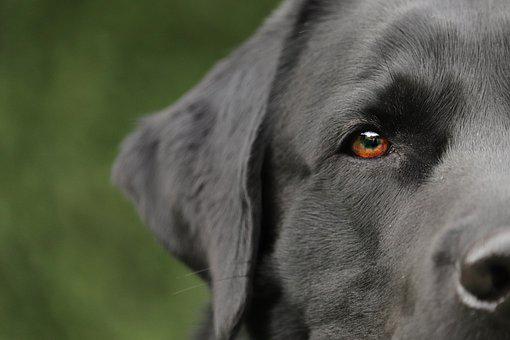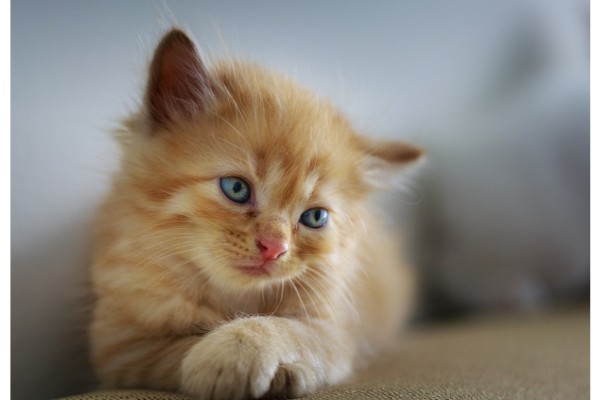As dog owners, we are aware of how crucial it is to maintain our dogs’ hygiene. But cleaning those ears can challenging if our dogs aren’t conditioned to accept ear cleaning, or we don’t feel comfortable doing it.
While some dogs naturally have clean, healthy ears and may hardly ever need to have them cleaned, other dogs need to have their ears cleaned frequently to avoid the buildup of dirt that can cause ear infections. Although all breeds of dogs are susceptible to ear infections, those with long, hanging ears, like Basset Hounds and Cocker Spaniels, are among the most at risk.
Checking the health of your dog’s ears is something you should be doing on a regular basis. If your dog pulls away from you, it may be because his ears are sore even though he might enjoy having them scratched when they’re healthy. So you can begin to assess their condition by gently massaging your dog’s ears.
Table of Contents
Why Is It Important?
The structure of the dog’s ear canal makes it difficult for material trapped deep within the horizontal canal to be expelled without the assistance of cleanings. If this substance isn’t removed, it may cause itching and ear infections.
Do I Need To Use An Ear Cleaner?
It is strongly advised that you use a high-quality ear cleaner. Cleaning solutions containing alcohol or hydrogen peroxide may irritate the ear canal, especially if the canal is inflamed or ulcerated. To help prevent ear infections, some ear cleaners contain antibacterial or antifungal ingredients. Additionally, some cleaners work better at removing wax accumulation. Which ear cleaning solution is best for your pet can be determined with assistance from your veterinarian.
How Can I Clean My Dog’s Ears?
Cleaning your dog’s ears does not require any special equipment. All you need is some cotton balls or gauze, an effective ear cleaning solution, and some dog treats to encourage good behavior. Do not use cotton tip applicators (Due to the possibility of damaging the ear canal or puncturing the eardrum, Q-tips® are not recommended. Additionally, using cotton tip applicators may force debris deeper into the ear canal.
Does Cleaning The Ears On All Dogs Really Matter?
No. While it’s important to clean your dog’s ears when necessary, doing so excessively can irritate the ear canal and increase the risk of infection. The ears of some dogs may never require cleaning if they have healthy, clean ears. However, it is advised to clean your dog’s ears if you detect a discharge or odor when inspecting the ear. Your veterinarian can help you decide how often your dog’s ears should be cleaned. Consult with your veterinarian before cleaning your dog’s ears if they are red, inflamed, or hurting. Your dog may have an ear infection or a ruptured ear drum.
When A Dog’s Ears Need Cleaning
Make sure your dog actually needs their ears cleaned before pulling out the ear cleaner. Over-cleaning your dog’s ears can result in infection and irritation, so become familiar with how a healthy, clean ear looks (pink, odorless, and not dirty or inflamed) and smells (not yeasty or stinky), and clean it only when you notice a change.
While some dogs only need their ears cleaned occasionally, others, like those who are prone to ear infections or those who spend a lot of time in the water, may. The Merck Veterinary Manual recommends that the ear canals be kept dry and well ventilated by using topical astringents in dogs that swim frequently and by preventing water from entering the ear canals during bathing.
Cleaning is probably necessary if you smell a faint odor or see your dog shaking his head more frequently than usual. And if your dog’s ear looks red and inflamed, smells yeasty, or he appears to be in pain, contact your veterinarian. These signs, which call for medical attention, could point to an allergy, an ear infection, fleas, or ear mites. It frequently does more harm than good to clean an infected ear.
Steps For Cleaning Your Dog’s Ears
Following are some instructions and advice for cleaning your dog’s ears.
Gather your tools. This could become messy if your dog doesn’t enjoy being held or groomed. Have towels, appropriate clothing, cotton balls or gauze pads, and ear wash solution ready. If the inside of your dog’s ear flap is extremely hairy, you might also need tweezers.
Never use cotton swabs to clean your dog’s ears. They can seriously harm your dog’s ear canal and make it more difficult to clean out any wax or dirt.
Start with grooming. Prior to cleaning, dogs with extremely hairy ears should get a haircut. Clean up the hair near the ear canal and ear flap, and remove matted hair. To increase airflow, you can pull out a few hairs at a time from the ear canal if it is also hairy.
Restrain your dog. Put your dog on a table and encircle them with your arm if it is small enough. To prevent the dog from attempting to stand up, have the dog lie down and get down on your knees. To effectively restrain the animal, you might need to place a gentle forearm close to the jaw and grab the upper elbow of the front leg’s bottom.
Apply ear wash solution: Fill the inner ear with an ear wash solution by using your dog’s ear flap as a funnel. Make sure not to put the bottle’s tip inside the ear. Use enough ear wash so that the liquid starts to flow out.

Guide For Medication Application
Cleaning your dog’s ears before administering medication is frequently a good idea. Your veterinarian will provide further information about how often the medication is to be applied and how many drops are needed.
- Using a firm but gentle grip, lift the ear flap straight up to reveal and straighten the ear canal.
- As directed by your veterinarian, administer the prescribed number of drops of medication. Keep the bottle’s tip out of your ears. To stop the spread of bacteria or yeast, clean the bottle tip that comes in contact with your dog’s ear with a cotton ball dipped in alcohol.
- For about 30 seconds, keep the ear flap vertically raised while giving a gentle massage to the area beneath the ear opening. The medication can then completely coat the ear canal as a result. You should again hear a squishing sound in the ear as the medication coats the horizontal part of the ear canal.
- Apply the recommended dosage of medication to the infected area of the ear flap if the inner portion of the flap is infected. With your finger (and preferably a glove on), spread the medication.
- Whenever necessary, carry out this procedure on the other ear.
- A cotton ball dipped in ear cleaning solution can be used to remove any debris or medication that has accumulated on the flap portion of the ear.
Ear-cleaning Supplies
A cotton ball or piece of gauze, dog ear cleaning solution, and a towel are the only tools you need to successfully clean your dog’s ears. Do not use anything with a pointed tip, including cotton-tipped swabs (Q-tips). These instruments may force dirt and other debris deeper into your dog’s ears, increasing the risk of infection and even causing damage to the ear’s internal structures.
A note to the wise: Ear cleaning, while simple, can get messy. If your dog shakes his head a lot while you’re cleaning his ears, you might want to do it in a bathroom or another easily cleaned area.
Dog Ear-cleaning Solutions
Dog ear cleaning recipes from scratch are widely available online. The most secure option is ear cleaning fluid that has been approved by a veterinarian. Some homemade ear-cleaning remedies include poisonous or irritant substances. Others simply don’t perform well.
Dog ear cleaner is typically available at veterinary clinics. As some products may be more advantageous for your dog’s unique needs than others, you can also ask your veterinarian for their recommendations.
Hydrogen Peroxide: Should You Use It?
No. Don’t use hydrogen peroxide on your pup. Actually, the healthy skin cells can become irritated by this common household product. Hydrogen peroxide use over an extended period of time may eventually cause damage to the ear itself because ears contain very sensitive tissue. Use only cleaning agents that have been approved by veterinarians.




